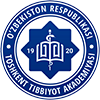The Experimental Biological Clinic is a research support unit of a scientific and educational institution that deals with the conservation and reproduction of animals used in biomedical research when needed.
Laboratory animals are used in scientific work (for scientific experiments) and in the educational process of the university (for demonstration material), as well as in the testing of biological and medicinal products.
In addition, the biomedical clinic will conduct independent research to develop individual research skills, mastering and mastering practical skills of students and masters with practical animals. At the Tashkent Medical Academy, various new pre-clinical researches with the use of laboratory animals are being conducted , biological and medicinal products are being tested. Animal species used for experiments –
1) Rats
2) Mice
3) Rabbits
4) Seaweed
5) Frogs
Vivari interacts with all the components of the Academy (departments, central research labs and others).
Development of research activity of the Tashkent Medical Academy (1920-2020)
(Information from TashMA archive)
The scientific activity of the Tashkent Medical Academy established in 1920 and has a long way to go, along with other areas of the Tashkent Medical Institute.
In its growth dynamics, each stage of its anxious and creative life clearly reflects in the pace and scope of work and the creative path. From the earliest days of the emergence of a young medical science, it faced the complex task- challenge of combating the regional diseases. The Tashkent Medical Institute has become the basis for extensive research, especially in the field of leshmaniosis, colonic disease, spray, malaria, prolonged diarrhea, brucellosis, transmissible typhus, toxic hepatitis and many other diseases.
All types of diseases have been studied locally in the context of this period. All research results were published in local and foreign press.Professor A N Kryukov made a great contribution to the study of tropical diseases, such as spray and malaria pellagra. . Especially, by clinics and departments, an important step in the scientific activity of the Institute was the study of the impact of the climate of Uzbekistan on the human organs – kidneys, cardiovascular system, gastric secretion and others.Scientific work is continuously developing and improving, independent scientific medical societies – therapeutic, surgical, gynecological, venerological, ophthalmological and other societies have carried out their scientific activity. Scientists and physicians of these societies exchanged scientific reports, conducted conferences, involved physicians from other societies, and collaborated with foreign scientists. Scientists and doctors published their creative ideas in the Turkiston Medical Journal, founded in 1921, and this journal played a major role in the development of medical science.
In 1934, TashMI received special funds for research, which allowed hiring staff, opening publications, purchasing scientific literature, special equipment and since then the Institute has become a large research institution. The number of recognized scientific works outside of Uzbekistan, including monographs, has increased. The collection of scientific works was also published in TashMI.
Scientists are actively working on doctoral and candidate dissertations and replenishing the faculty. Much attention is paid to expanding the training of specialists through master’s and clinical internships. The Tashkent Medical Institute is becoming a major educational, medical and scientific institution.
In accordance with the Decree by the President of the Republic of Uzbekistan I. Karimov, No_1533 dated May 20, 2011, the intra-institutional research laboratory “Medical-genetic, molecular, pharmaco-toxic and biological research” of TMA was established.
The purpose of the MITL is to improve the methods of diagnosis, treatment and prevention of diseases and the introduction of innovative technologies in applied medicine by combining fundamental and practical research in medical biology, genetics, immunology, pathology, histology and clinical pharmacology.
Along with scientific activities, MITL staff create conditions for research, postgraduate, resident, senior students and young professionals from various universities of the Republic of Uzbekistan, who come to study the master’s theses and dissertations, apply practical skills in modern medical equipment. MITL includes the following sections – the Medical Genetic and Immune Enzyme Division;
- – Department of molecular cell technology with electron microscopy
- – Department of Pharmaco-toxicological Research;
- – Department of biological and immunological studies
- – Grants Coordination Unit.
There are 5 dissertations defended on the basis of MITL, 3 of them are doctoral and 2 are candidates of science.
There was also research on grants implemented under state scientific and technical programs. On the basis of agreements with 23 universities and research institutes of the republic, scientific cooperation is established.
The Ministry of Health of the Republic of Uzbekistan is currently conducting research on the assessment of hygienic and toxicological biomedical safety of food supplements, chemicals, pesticides.



